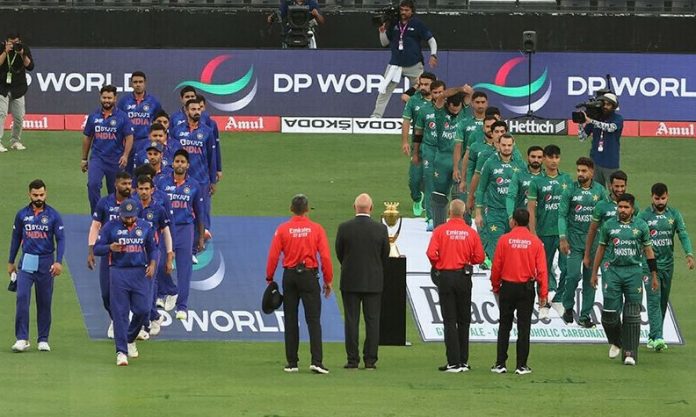By Fahad Parvez
Cricket is more than just a sport in Pakistan and India; it’s a passion that unites millions. A common trend among fans in both countries is to compare their players to those from across the border. While rivalry can fuel excitement, it’s important to acknowledge the differences in achievements and capabilities objectively. Over the past decade and a half, Indian cricket has seen a marked improvement, while Pakistan cricket has undergone a perpetual decline. This suggests that maybe it is time for Pakistani fans to stop comparing their players to those in India. Here are a dozen compelling reasons to support this argument:
1. World Cup Record:
India has a more impressive record of winning World Cups compared to Pakistan. India has won the ICC Cricket World Cup twice (1983 and 2011) and the ICC World T20 also twice (2007 and 2024). In contrast, Pakistan has won the ICC Cricket World Cup in 1992 and the ICC World T20 in 2009. The Indian team approaches the World Cup with meticulous planning, often starting preparations months in advance. In contrast, Pakistan is known for its last-minute, knee-jerk team selections, as evidenced in the lead-up to the recent T20 World Cup. For India, an early exit from the World Cup prompts immediate corrective measures. For Pakistan, it typically results in the formation of a fact-finding committee that seldom produces effective outcomes. Any “surgeries” implemented are often temporary, with a tendency to wait for public memory to fade before reverting to the status quo until the next crisis occurs.
2. Recent Head-to-Head Record:
In recent encounters, India has consistently had the upper hand against Pakistan. This trend is particularly evident in major tournaments, where India’s superior planning and execution have outshone Pakistan, apart from a couple of matches. India has secured miraculous wins through sheer grit and self-belief, while Pakistan has frequently fallen short. Pakistan’s defensive mindset against India’s formidable team is often apparent, and they seem more prone to cracking under pressure.
3. Batting Averages and Strike Rates in Big Games:
Indian batsmen currently boast better averages and strike rates in crucial limited-over matches compared to their Pakistani counterparts. For example, Virat Kohli and Rohit Sharma (who retired from T20 Internationals after India winning the 2024 ICC World T20) have consistently maintained high averages and impressive strike rates in games that matter. In contrast, Pakistan’s top batsmen, like Babar Azam and Mohammad Rizwan, despite their talent, have struggled to achieve similar figures consistently against tough oppositions, often scoring big in losing causes and facing accusations of stat-padding. Pakistan’s middle order is nearly non-existent, with hardly any name making a significant impact. In contrast, India has established batsmen like Suryakumar Yadav, Rishabh Pant, and Hardik Pandya, who have the potential to decimate any bowling attack in a matter of a few overs.
4. Bowling Attacks that are Poles Apart:
India’s current pace battery is significantly more reliable than Pakistan’s. Jasprit Bumrah alone seems more precise and lethal than Pakistan’s Shaheen, Haris, and Naseem combined. Pakistan’s pace attack often suffers from inconsistency and frequent injuries. Players returning from injuries often appear to have lost their venom. In contrast, India has fitter, more promising, focused, and eager-to-perform talent like emerging through the ranks like Arshdeep Singh and Mohammad Siraj. India’s quality in the spin department is also unmatched. Kuldeep Yadav, Yuzvendra Chahal, Ravindra Jadeja and Axar Patel are head and shoulders above Pakistan’s lackluster options, such as Shadab Khan and Imad Wasim. As ironic as it may seem, Pakistan’s only notable spinner, Abrar Ahmed, has been a mere bench-warmer on almost all major tours recently.
5. The IPL Factor:
The Indian Premier League (IPL) is the most powerful and competitive cricket league in the world. It attracts top talent globally and provides Indian players with unparalleled exposure and experience. In contrast, the Pakistan Super League (PSL) is still growing and does not yet match the IPL’s global reach and financial clout. Players entering the national team based on PSL performances are often exposed by the rigors of international cricket, casting doubt on the quality of the talent pool produced by the PSL.
6. Player Participation in Foreign Leagues:
Indian players do not participate in other global T20 leagues, focusing solely on the IPL and their national duties. In contrast, Pakistani players frequently chase opportunities to play in leagues in all nooks and corners of the world. This pursuit leads to fatigue, inconsistent performances, and a decline in the enthusiasm of Pakistani players to excel in national colors.
7. Board Investment on Talent Development:
The Board of Control for Cricket in India (BCCI) invests heavily in player development through grassroot programs, state-of-the-art facilities, and domestic tournaments like the Ranji and Syed Mushtaq Ali Trophies. This systematic approach ensures a steady supply of talented players ready for international cricket from both urban and rural areas of the country. As a result, India has been consistently producing new cricketing talent, such as Shubman Gill, Rinku Singh, and Sarfaraz Khan, who quickly made their mark on the international stage. In contrast, Pakistan’s domestic tournaments lack the quality needed to consistently produce talent that can compete at the international level. The talent that does emerge domestically often struggles when tested against reputable international teams, often appearing overwhelmed and unprepared.
8. Contrasting Player IQ levels and On-tour Focus:
Indian players demonstrate superior game awareness, clarity of thought, and an indomitable spirit that allows them to recover from the direst situations. When on tours, their focus is solely on cricket. Conversely, Pakistani players, often hampered by limited education, exhibit lower IQ levels, reflected in their lack of situational awareness, poor decision-making, and mental toughness. Their inability to logically approach situations has cost them crucial games. The way they respond to questions asked by the media is a testament to their limited intellect. Their focus during tours seems to shift towards sightseeing, shopping, entertaining a large personal entourage often comprised of parents, sibings and spouses, and taking on the role of a preacher. Consequently, playing cricket—the primary responsibility of Pakistani players while on tour—seems to take a back seat. What’s even worse is that, even after losing, there is hardly any reduction in these distracting activities.
9. Nepotism:
Nepotism is rarely an issue in Indian cricket, where selection is largely merit-based. In contrast, Pakistan cricket has faced several instances where players are believed to have been selected due to connections rather than performance. Notable examples include Imam Ul Haq, Shadab Khan, Hassan Ali and Azam Khan who have been criticized for being favored despite inconsistent performances, either because they’ve been friends with captain “king”, related to a prominent cricketing personality or possess a strong political backing.
10. Stability in the Cricket Board:
The BCCI is one of the most stable and financially powerful cricket boards globally. This stability allows for long-term planning and strategic growth. In comparison, the Pakistan Cricket Board (PCB) has often been plagued by administrative changes and controversies, which can disrupt the team’s performance and development.
11. Match/Spot Fixing History:
While India has faced its share of cricket corruption controversies, such as the Prabhakar, Jadeja, and Azharuddin scandals and the IPL spot-fixing episode involving Sreesanth, Pakistan has dealt with more severe and high-profile incidents. These include the Saleem Malik and Ata Ur Rehman scandals in 2000, the infamous 2010 spot-fixing scandal involving Salman Butt, Mohammad Asif, and Mohammad Amir, Danish Kaneria’s ban imposed by the ECB in 2012, Nasir Jamshed’s ban in 2018, and the bans of several years handed to Sharjeel Khan, Khalid Latif, and Shahzaib Hasan for corruption. These incidents have significantly tarnished Pakistan’s cricketing image, leading to Pakistani fans often questioning their team’s integrity whenever they lose a match they should have won. The BCCI’s timely and effective handling of cases allegedly involving Indian players has contributed to India’s relatively cleaner image in the public eye compared to Pakistan.
12. Rehabilitation of Injured Players:
India has a superior rehabilitation plan for injured players. Notable and recent examples include Rishabh Pant and Jasprit Bumrah, who were effectively managed and supported during their recovery periods against career-threatening injuries. In contrast, Pakistan has struggled with player rehabilitation, as seen in the case of emerging fast bowler Ehsanullah, whose career is in jeopardy due to inadequate injury management and negligent attitude of the people that matter.
Considering the current attitudes and direction of Pakistani cricketers and cricket administrators, it’s time for Pakistani fans to confront the harsh reality: comparisons with Indian cricket are no longer practical. The decline in Pakistan cricket, marred by inconsistent performances, lack of player focus, administrative instability, and a lack of strategic planning, contrasts starkly with India’s systematic approach, player commitment and consistent success. While it’s painful to accept, the perpetual issues within Pakistan’s cricketing framework—ranging from poor player management to rampant nepotism and inadequate development programs—mean that expecting parity with India is unrealistic. Instead, Pakistani fans should learn to manage their expectations, understanding that meaningful change requires a fundamental overhaul of behaviors and practices within the country’s overall cricketing framework – something that’s long overdue.

















